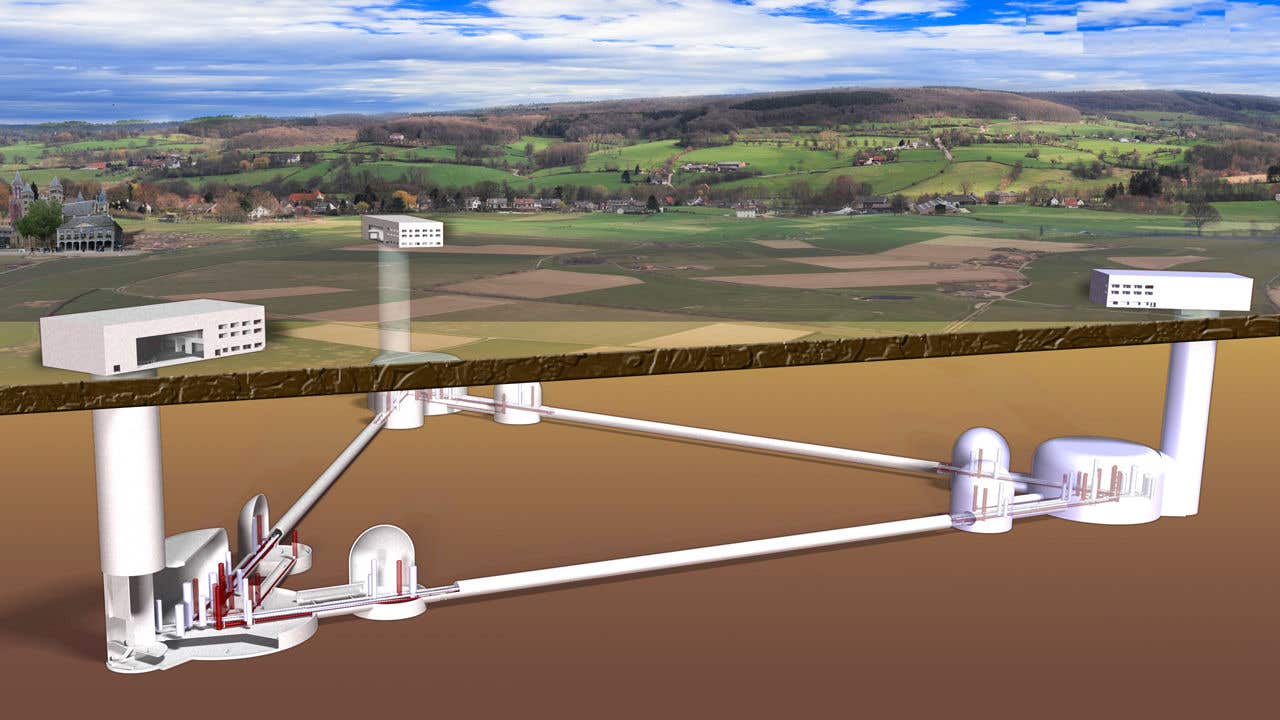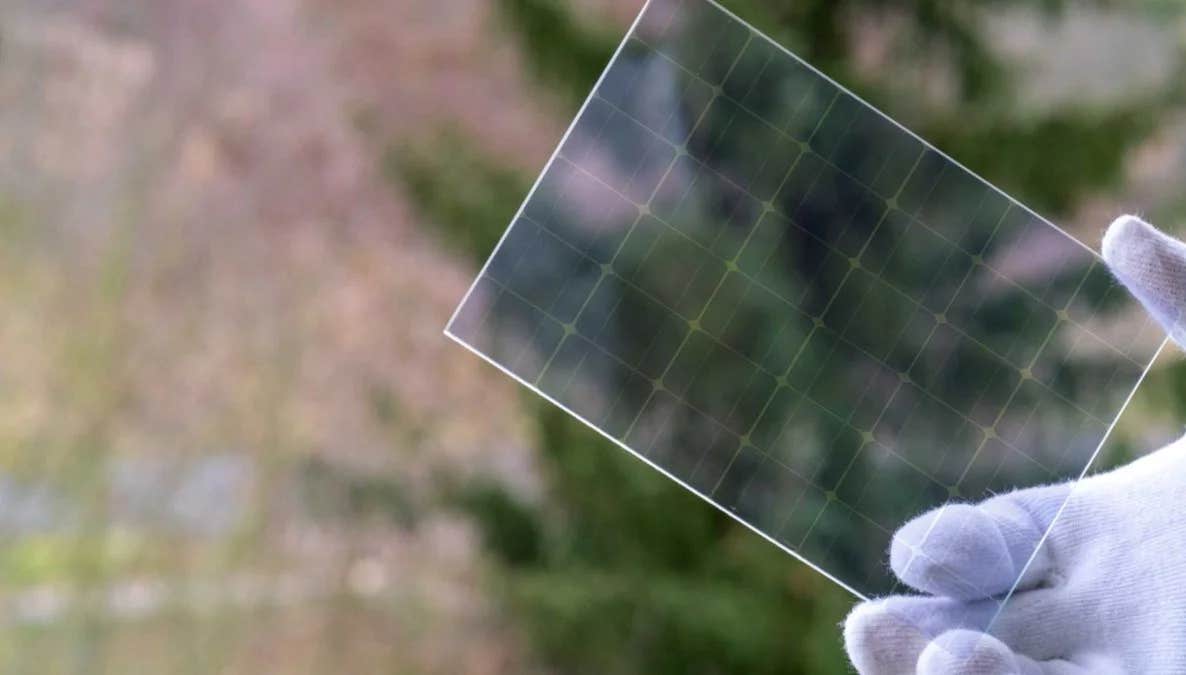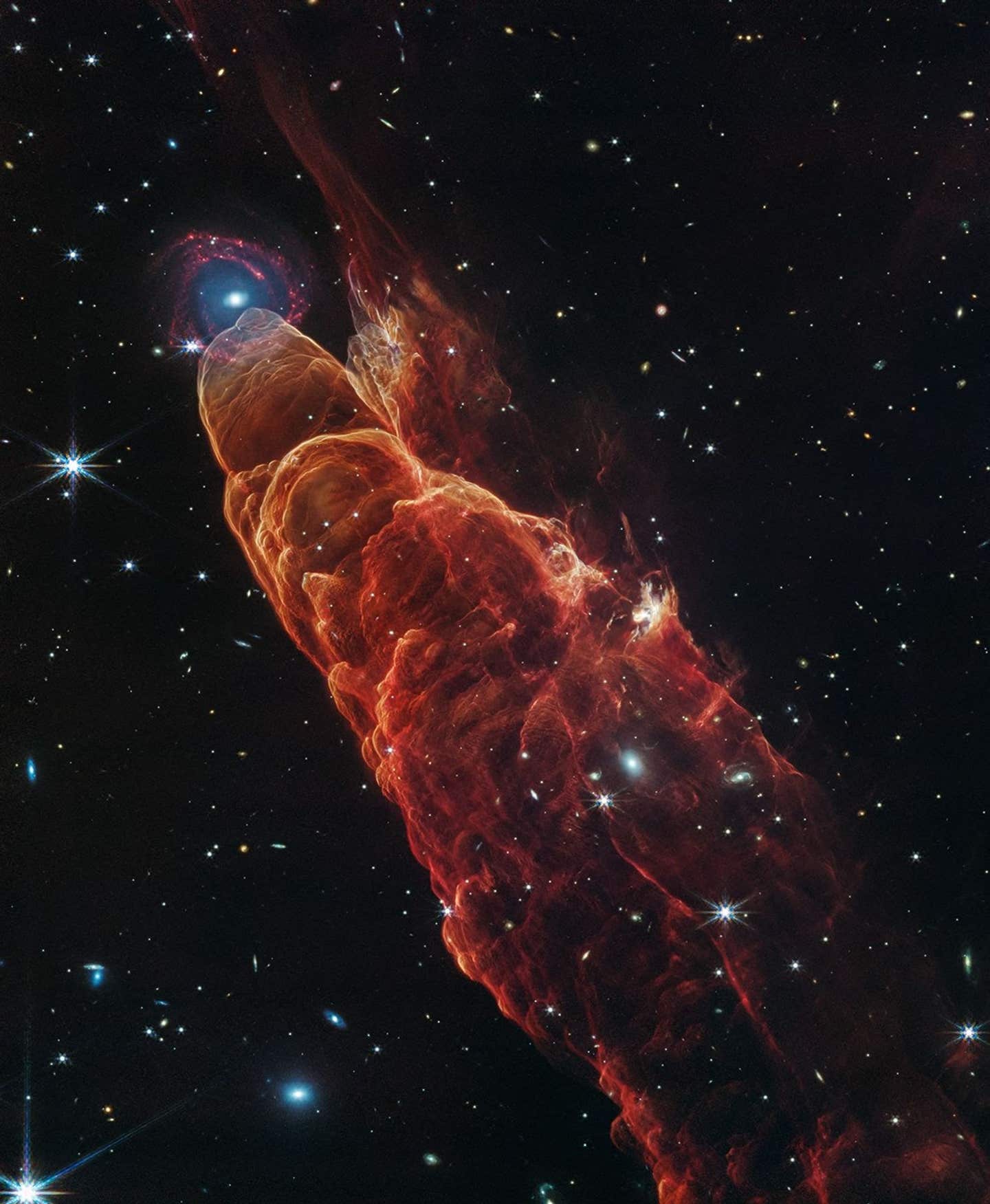Giant gravitational wave detectors could peer back to see a universe before stars
Just 5 years ago, physicists opened a new window on the universe when they first detected gravitational waves, ripples in space itself

[August 16, 2021: Adrian Cho]
Europe’s proposed Einstein Telescope, an early design of which is shown here in an artist’s conception (not to scale), would comprise six detectors in a triangular arrangement of tunnels. (CREDIT: ET CONCEPTUAL DESIGN TEAM)
Just 5 years ago, physicists opened a new window on the universe when they first detected gravitational waves, ripples in space itself set off when massive black holes or neutron stars collide. Even as discoveries pour in, researchers are already planning bigger, more sensitive detectors. And a Ford versus Ferrari kind of rivalry has emerged, with scientists in the United States simply proposing bigger detectors, and researchers in Europe pursuing a more radical design.
“Right now, we’re only catching the rarest, loudest events, but there’s a whole lot more, murmuring through the universe,” says Jocelyn Read, an astrophysicist at California State University, Fullerton, who’s working on the U.S. effort. Physicists hope to have the new detectors running in the 2030s, which means they have to start planning now, says David Reitze, a physicist at the California Institute of Technology (Caltech). “Gravitational wave discoveries have captivated the world, so now is a great time to be thinking about what comes next.”
Current detectors are all L-shaped instruments called interferometers (see diagram, below). Laser light bounces between mirrors suspended at either end of each arm, and some of it leaks through to meet at the crook of the L. There, the light interferes in a way that depends on the arms’ relative lengths. By monitoring that interference, physicists can spot a passing gravitational wave, which will generally make the lengths of the arms waver by different amounts.
To tamp down other vibrations, the interferometer must be housed in a vacuum chamber and the weighty mirrors hung from sophisticated suspension systems. And to detect the tiny stretching of space, the interferometer arms must be long. In the Laser Interferometer Gravitational-Wave Observatory (LIGO), twin instruments in Louisiana and Washington state that spotted the first gravitational wave from two black holes whirling into each other, the arms are 4 kilometers long. Europe’s Virgo detector in Italy has 3-kilometer-long arms. In spite of the detectors’ sizes, a gravitational wave changes the relative lengths of their arms by less than the width of a proton.
The dozens of black hole mergers that LIGO and Virgo have spotted have shown that stellar-mass black holes, created when massive stars collapse to points, are more varied in mass than theorists expected. In 2017, LIGO and Virgo delivered another revelation, detecting two neutron stars spiraling together and alerting astronomers to the merger’s location on the sky. Within hours telescopes of all types had studied the aftermath of the resulting “kilonova,” observing how the explosion forged copious heavy elements.
Researchers now want a detector 10 times more sensitive, which they say would have mind-boggling potential. It could spot all black hole mergers within the observable universe and even peer back to the time before the first stars to search for primordial black holes that formed in the big bang. It should also spot hundreds of kilonovae, laying bare the nature of the ultradense matter in neutron stars.
The U.S. vision for such a dream machine is simple. “We’re just going to make it really, really big,” says Read, who is helping design Cosmic Explorer, an interferometer with arms 40 kilometers long—essentially, a LIGO detector scaled up 10-fold. The “cookie cutter design” might enable the United States to afford multiple, widely separated detectors, which would help pinpoint sources on the sky as LIGO and Virgo do now, says Barry Barish, a physicist at Caltech who directed the construction of LIGO.
Siting such mammoth wave catchers may be tricky. The 40-kilometer arms have to be straight, but Earth is round. If the middle of each arm were to lie level with the ground, the arm’s ends would have to rest on berms 30 meters high. So U.S. researchers hope to find bowl-like areas that might accommodate the structure more naturally.
In contrast, European physicists envision a single subterranean gravitational wave observatory, called the Einstein Telescope (ET), that would do it all. “We want to realize an infrastructure that is able to host all the evolutions [of detectors] for 50 years,” says Michele Punturo, a physicist with Italy’s National Institute for Nuclear Physics in Perugia and co-chair of the ET steering committee.
The ET would comprise multiple V-shaped interferometers with arms 10 kilometers long, arranged in an equilateral triangle deep underground to help shield out vibrations. With interferometers pointed in three directions, the ET could determine the polarization of gravitational waves—the direction in which they stretch space—to help locate sources on the sky and probe the fundamental nature of the waves.
The tunnels would actually house two sets of interferometers. The signals detected by LIGO and Virgo hum at frequencies that range from about 10 to 2000 cycles per second and rise as a pair of objects spirals together. But picking up lower frequencies of just a few cycles per second would open new realms. To detect them, a second interferometer that uses a lower power laser and mirrors cooled to near absolute zero would nestle in each corner of the ET. (Such mirrors are already in use at Japan’s Kamioka Gravitational Wave Detector (KAGRA) which has 3-kilometer arms and is striving to catch up with LIGO and Virgo.)
By going to lower frequencies, the ET could detect the merger of black holes hundreds of times as massive as the Sun. It could also catch neutron-star pairs hours before they actually merge, giving astronomers advance warning of kilonova explosions, says Marica Branchesi, an astronomer at Italy’s Gran Sasso Science Institute. “The early emission [of light] is extremely important, because there is a lot of physics there,” she says.
The ET should cost €1.9 billion, including €900 million for the tunneling and basic infrastructure, Punturo says. Researchers are considering two sites, one near where Belgium, Germany, and the Netherlands meet and another on the island of Sardinia. The plan is under review by the European Strategy Forum on Research Infrastructures, which could put the ET on its to-do list this summer. “This is an important political step,” Punturo says, but not final approval for construction.
The U.S. proposal is less mature. Researchers want the National Science Foundation to provide $65 million for design work so a decision on the billion-dollar machine can be made in the mid-2020s, Barish says. Physicists hope to have both Cosmic Explorer and the ET running in the mid-2030s, at the same time as the planned Laser Interferometer Space Antenna, a constellation of three spacecraft millions of kilometers apart that will sense gravitational waves of far lower frequencies from supermassive black holes in the centers of galaxies.
The push for new gravitational wave detectors isn’t necessarily a competition. “What we really want is to have ET and Cosmic Explorer and, ideally, even a third detector of similar sensitivity,” says Stefan Hild, a physicist at Maastricht University who works on the ET. Reitze notes, however, that timing and cost could “push towards convergence and simplicity in designs.” Instead of a Ford and a Ferrari, perhaps physicists will end up building a few Audis.
Like these kind of feel good stories? Get the Brighter Side of News' newsletter.
Tags: #New_Innovations, #Space, #Gravity_Wave_Detector, #Einstein, #Global_Good_News, #The_Brighter_Side_of_News
Joseph Shavit
Head Science News Writer | Communicating Innovation & Discovery
Based in Los Angeles, Joseph Shavit is an accomplished science journalist, head science news writer and co-founder at The Brighter Side of News, where he translates cutting-edge discoveries into compelling stories for a broad audience. With a strong background spanning science, business, product management, media leadership, and entrepreneurship, Joseph brings a unique perspective to science communication. His expertise allows him to uncover the intersection of technological advancements and market potential, shedding light on how groundbreaking research evolves into transformative products and industries.



